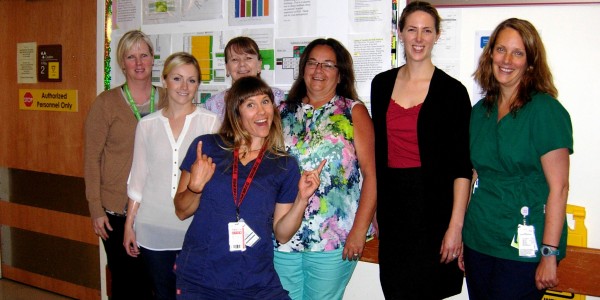From the bottom up
Clinical services coordinator Nancy Haffey has been working at Squamish General Hospital (SGH) for 12 years and she’s never seen the supply room so organized.
“It’s amazing,” she says with a small laugh. “You can find things so much easier. It’s much less frustrating because everything’s in colour-coded bins – and we save money ordering less supplies because of it.”
The reason why the supply room is more organized is because of the Releasing Time to Care program (RT2C), which was launched last May to improve practises and empower members of the SGH team to identify areas for improvement.
A couple of weeks ago, the RT2C program in Squamish (as well as a similar program in Richmond) won B.C. Quality Awards in the “Getting Better” category for improving the reliability, safety and efficiency of care for patients.
In addition to organizing the supply room, the RT2C program has created a lot of other positive changes in the hospital including identifying and reducing the number of inpatient falls by more than 50 per cent. Some of the changes they made to reduce falls included de-cluttering patient rooms, purchasing two chair alarms and introducing whiteboards by the patient’s bed addressing any safety issues. The team improved communication by installing a patient-status-at-a-glance (PSAG) whiteboard in the report room with all of the patient’s relevant health information, and reducing missed dinner breaks for staff through a more structured break schedule.
But most importantly, as program lead Jacquie Miller says, “the staff have an opportunity to voice their suggestions and concerns during the daily RT2C meetings, creating a true team environment.”
“It’s improved a lot of processes and the way we did things, but it’s more about culture change,” she says. “Staff didn’t really feel that they were heard and the regular meetings are encouraging them to raise issues.”
“It’s creating change from the bottom up instead of the top down from management,” says Veronica Fincham, a clinical nurse educator at SGH. “They’re able to make changes in their own work environment.”

